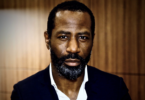Ian Rogers, the former director of Apple Music, is chief digital officer of LVMH, the Paris-based conglomerate that owns 70 luxury brands, including Céline, Christian Dior, Berluti, Bulgari, Fendi and Givenchy. (LVMH also owns Groupe Les Echos, The Innovator’s parent company.) Rogers is responsible for LVMH’s foray into multi-brand luxury e-commerce, 24 Sèvres, a boutique shopping website and mobile app named after the Paris street where LMVH’s flagship Paris department store Le Bon Marché is located. In the last year he has additionally helped LMVH to ramp up its e-commerce business across brands with new sites for Céline handbags and Berluti shoes; launched the first online store in China for the group brand Louis Vuitton ;and approved the launch of LMVH brands in the luxury section of Tmall, the Internet giant Alibaba’s multi-brand e-commerce site.
 LMVH’s Ian Rogers. Photo Credit:Edouard Jacquinet
LMVH’s Ian Rogers. Photo Credit:Edouard Jacquinet
Rogers recently spoke to The Innovator’s editor-in-chief about how tech is transforming the luxury sector.
Q: It has been one year since LMVH launched 24 Sèvres. Although LMVH does not break out traffic to the site, press reports say the figures still trail way behind those of other digital luxury e-commerce players such as FarFetch and Yoox Net-A-Porter. Is that a fair statement? Are you pleased with the site’s progress?
IR: We are extremely pleased. We don’t compare to those e-commerce players. The way we look at the landscape is you have to be able to offer all the things a customer is looking for. It is not just about being a multi-brand retailer. We have invested heavily in our brand-to-consumer platforms. Last year Céline, Givenchy and Berluti launched direct e-commerce from their web sites and most all LVMH brands, including Louis Vuitton and Dior, expanded e-commerce geographically including China. Sephora, in cosmetics, is the clear industry leader, and we are building our strength in multi-brand fashion e-commerce as well with 24 Sèvres.
Many of our brands have a relationship with Farfetch and with other marketplaces around the world. We have also increased our efforts when it comes to search engine optimization and affiliates such as Google Shopping and Lyst as part of our overall e-commerce strategy.
Q: What would you say is 24 Sèvres’ primary differentiator online?
IR: The first is a unique and exclusive selection. The French and Parisian take on fashion wasn’t represented until 24 Sèvres came online. 24 Sèvres is the only online multi-brand to offer Louis Vuitton, Dior and Céline, and we have offered many other exclusives, from our initial capsule collection to Rimowa/Supreme. The second is unparalleled service. When you visit 24 Sèvres you can click a button and via video you are connected with a stylist in Paris, so no matter where in the world you are, you can get the same advice you might get if you walk into Le Bon Marché in Paris and are interacting with a salesperson. Our belief is that the future of luxury e-commerce is not a bunch of dresses in a grid. In some ways it more similar to a Warby Parker or Uber approach, one that solves consumer problems using technology as opposed to digitizing the space. With Uber I can call a car with an app and have a physical world experience that made it convenient for me to get from one place to another, similarly with 24 Sèvres instead of dresses on a grid I can reach someone who can give me styling advice, arrange to pick up my dress or try it on at Le Bon Marché if that is what I want to do and receive great content in my inbox showing me the daily looks on the streets of Paris. That is why in [an October 2017 report published by Exane BNP Paribas] that analyzes the customer experience in Paris throughout the online purchasing process, we came in at number one, above Burberry.
Q: Two of China’s biggest e-tailers — Alibaba and JD.com — are also trying to get into the luxury retail market, as the Chinese account for a third of luxury goods sales. Do you view these new Chinese entrants as competitors?
IR: I love the China challenge. I personally find it one of the most interesting and fun parts of my job here at LVMH. The leaders of Alibaba and JD.com have an appreciation for luxury. They value it. It is a part of their ecosystem. Alibaba has made big moves with Tmall. Our initial response was that it was OK for cosmetics but not appropriate for luxury fashion. We talked a lot with Alibaba about this directly. Recently they responded to our feedback by launching the Tmall Luxury Pavilion — and we immediately started with a test with Loewe. When I joined the group there were zero LVMH brands on Tmall. Today we have nine and that is likely to expand in the future. We are also experimenting with JD.com’s Top Life — their own multi-brand retailer –as well. They offer white-glove delivery of luxury goods to enhance the experience.
Q: How is LMVH marketing directly to Chinese consumers?
IR: Many of the luxury goods purchases by the Chinese happen when they travel and 100% of Chinese consumers are using WeChat. It is an incredible messaging system and we are investing heavily in using it to connect to customers and influencers.
Q: How would you describe LMVH’s overall approach to creating an inspirational luxury experience both online and off, and how do you see that evolving?
IR: We are considering this very carefully and are building to meet customer expectations both now and in the future. Luxury is not going to become a commoditized experience. That is not what customers want. As our lives become more and more driven by our phone,s in-person experiences will demand a premium. With 24 Sèvres, the online extension of the original department store, Le Bon Marché, your order arrives in a gorgeous box adorned with your initials and a paper Eiffel Tower pops up when you open it. Le Bon Marché itself is increasingly experiential. I can have a coffee there, buy my groceries, get my hair cut and at Christmas time there are acrobats and opera singers. Every January there is an art exhibition. I can still go to the second floor and buy a $15,000 dress but I also go there because it is a great place to go. It is a destination in itself. Just as you need to create a compelling in-store experience we believe you have to have a really excellent and convenient online experience and offer people something special. When you visit Celine.com and 24 Sèvres, each one does what they do exceptionally well. At the same time Céline stores are incredible and women and men want to have that experience so we are going to need to have that combination of both.
Q: What types of innovations can we expect in the future that will help stores do a better job of recognizing and connecting to their customers ?
IR: One of the things we are testing is a card that goes into your digital wallet, like a boarding pass for a flight, so that when I walk into the store — a sales assistant or it could be a kiosk — will immediately know I am here. I think people would get up in arms if we used facial recognition and would say “Hello there Mr. Rogers who know you were looking online last night at a Trio bag,” but on the other hand if they have invested their precious time to create a wish list, customers might like to connect that with their in-store experience. I think this is why every brand is looking at all of their customer journeys and trying to update them with their brand values. Everyone is working hard on this problem. It will be some time for the pieces to come together and I think you will have some missteps along the way.

Q: Is the luxury sector behind when it comes to adopting technology?
IR: I don’t think luxury brands should be the early adopters but I don’t think we should be on the Luddite side of the curve either, which is maybe where we have been. It is not about shiny objects. It is about ‘Wow that was definitely a great experience. That is what we are all aiming for.






